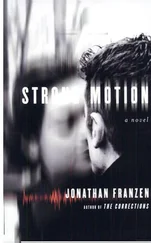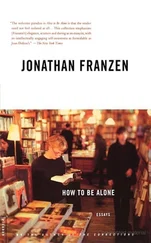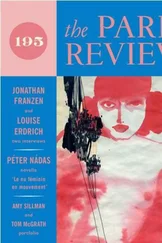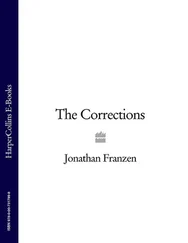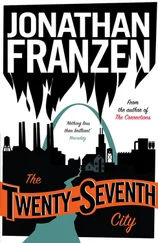Jonathan Franzen - The Discomfort Zone
Здесь есть возможность читать онлайн «Jonathan Franzen - The Discomfort Zone» — ознакомительный отрывок электронной книги совершенно бесплатно, а после прочтения отрывка купить полную версию. В некоторых случаях можно слушать аудио, скачать через торрент в формате fb2 и присутствует краткое содержание. Город: Ney York, Год выпуска: 2006, ISBN: 2006, Издательство: Farrar, Straus and Giroux, Жанр: Современная проза, на английском языке. Описание произведения, (предисловие) а так же отзывы посетителей доступны на портале библиотеки ЛибКат.
- Название:The Discomfort Zone
- Автор:
- Издательство:Farrar, Straus and Giroux
- Жанр:
- Год:2006
- Город:Ney York
- ISBN:918-0-312-94841-2
- Рейтинг книги:3.5 / 5. Голосов: 2
-
Избранное:Добавить в избранное
- Отзывы:
-
Ваша оценка:
- 80
- 1
- 2
- 3
- 4
- 5
The Discomfort Zone: краткое содержание, описание и аннотация
Предлагаем к чтению аннотацию, описание, краткое содержание или предисловие (зависит от того, что написал сам автор книги «The Discomfort Zone»). Если вы не нашли необходимую информацию о книге — напишите в комментариях, мы постараемся отыскать её.
Notable Book of the Year The Discomfort Zone
The Discomfort Zone — читать онлайн ознакомительный отрывок
Ниже представлен текст книги, разбитый по страницам. Система сохранения места последней прочитанной страницы, позволяет с удобством читать онлайн бесплатно книгу «The Discomfort Zone», без необходимости каждый раз заново искать на чём Вы остановились. Поставьте закладку, и сможете в любой момент перейти на страницу, на которой закончили чтение.
Интервал:
Закладка:
Finally, sadly, around Christmastime, I came to the conclusion that my ready-made escape route had disappeared. I might find some other route later, but this route was no more. For a while, in the Californian’s cabin, I was able to take seasonal comfort in stupefying amounts of aquavit, champagne, and vodka. But then it was New Year’s, and I faced the question of what to do with myself for the next thirty childless years; and the next morning I got up early and went looking for the Eurasian wigeon that had been reported in south Santa Cruz County.
MY AFFAIR WITHbirds had begun innocently — an encounter on Hat Island, a morning of sharing binoculars with friends on Cape Cod. I wasn’t properly introduced until a warm spring Saturday when the Californian’s sister and brother-in-law, two serious birders who were visiting New York for spring migration, took me walking in Central Park. We started at Belvedere Castle, and right there, on mulchy ground behind the weather station, we saw a bird shaped like a robin but light-breasted and feathered in russet tones. A veery, the brother-in-law said.
I’d never even heard of veeries. The only birds I’d noticed on my hundreds of walks in the park were pigeons and mallards and, from a distance, beyond a battery of telescopes, the nesting red-tailed hawks that had become such overexposed celebrities. It was weird to see a foreign, unfamous veery hopping around in plain sight, five feet away from a busy footpath, on a day when half of Manhattan was sunning in the park. I felt as if, all my life, I’d been mistaken about something important. I followed my visitors into the Ramble in agreeably engrossed disbelief, as in a dream in which yellowthroats and redstarts and black-throated blue and black-throated green warblers had been placed like ornaments in urban foliage, and a film production unit had left behind tanagers and buntings like rolls of gaffer’s tape, and ovenbirds were jogging down the Ramble’s eroded hillsides like tiny costumed stragglers from some Fifth Avenue parade: as if these birds were just momentary bright litter, and the park would soon be cleaned up and made recognizable again.
Which it was. By June, the migration was over; songbirds were no longer flying all night and arriving in New York at dawn, seeing bleak expanses of pavement and window, and heading to the park for refreshment. But that Saturday afternoon had taught me to pay more attention. I started budgeting extra minutes when I had to cross the park to get somewhere. Out in the country, from the windows of generic motels, I looked at the cattails and sumac by interstate over-passes and wished I’d brought binoculars. A glimpse of dense brush or a rocky shoreline gave me an infatuated feeling, a sense of the world’s being full of possibility. There were new birds to look for everywhere, and little by little I figured out the best hours (morning) and the best places (near some water) to go looking. Even then, it sometimes happened that I would walk through the park and see no bird more unusual than a starling, literally not one, and I would feel unloved and abandoned and wronged. (The stupid birds: where were they?) But then, later in the week, I’d see a spotted sandpiper by the Turtle Pond, or a hooded merganser on the Reservoir, or a green heron in some dirt by the Bow Bridge, and be happy.
Birds were what became of dinosaurs. Those mountains of flesh whose petrified bones were on display at the Museum of Natural History had done some brilliant re-tooling over the ages and could now be found living in the form of orioles in the sycamores across the street. As solutions to the problem of earthly existence, the dinosaurs had been pretty great, but blue-headed vireos and yellow warblers and white-throated sparrows — feather-light, hollow-boned, full of song — were even greater. Birds were like dinosaurs’ better selves. They had short lives and long summers. We all should be so lucky as to leave behind such heirs.
The more I looked at birds, the more I regretted not making their acquaintance sooner. It seemed to me a sadness and a waste that I’d spent so many months out West, camping and hiking amid ptarmigans and solitaires and other fantastic birds, and had managed, in all that time, to notice and remember only one: a long-billed curlew in Montana. How different my marriage might have been if I’d been able to go birding! How much more tolerable our year in Spain might have been made by European waterfowl!
And how odd, come to think of it, that I’d grown up unscathed by Phoebe Snetsinger, the mom of one of my Webster Groves classmates, who later became the most successful birder in the world. After she was diagnosed with metastatic malignant melanoma, in 1981, Snetsinger decided to devote the remaining months of her life to really serious birding, and over the next two decades, through repeated remissions and recurrences, she saw more species than any other human being before or since; her list was near eighty-five hundred when she was killed in a road accident while chasing rarities in Madagascar. Back in the seventies, my friend Manley had come under Snetsinger’s influence. He finished high school with a life list of better than three hundred species, and I was more interested in science than Manley was, and yet I never aimed my binoculars at anything but the night sky.
One reason I didn’t was that the best birders at my high school were serious potheads and acid users. Also, most of them were boys. Birding wasn’t necessarily nerdy (nerds didn’t come to school tripping), but the scene associated with it was not my idea of galvanic. Of romantic. Tramping in woods and fields for ten hours, steadily looking at birds, not communicating about anything but birds, spending a Saturday that way, was strikingly akin, as a social experience, to getting baked.
Which itself may have been one reason why, in the year following my introduction to the veery, as I began to bird more often and stay out longer, I had a creeping sense of shame about what I was doing. Even as I was learning my gulls and sparrows, I took care, in New York, not to wear my binoculars on a strap but to carry them cupped discreetly in one hand, and if I brought a field guide to the park, I made sure to keep the front cover, which had the word BIRDS in large type, facing inward. On a trip to London, I mentioned to a friend there, a book editor who is a very stylish dresser, that I’d seen a green woodpecker eating ants in Hyde Park, and he made a horrible face and said, “Oh, Christ, don’t tell me you’re a twitcher.” An American friend, the editor of a design magazine, also a sharp dresser, similarly clutched her head when I told her I’d been looking at birds. “No, no, no, no, no, no,” she said. “You are not going to be a birdwatcher.”
“Why not?”
“Because birdwatchers— ucch . They’re all so— ucch .”
“But if I’m doing it,” I said, “and if I’m not that way—”
“But that’s the thing!” she said. “You’re going to become that way. And then I won’t want to see you anymore.”
She was talking in part about accessories, such as the elastic harness that birders attach to their binoculars to minimize neck strain and whose nickname, I’m afraid, is “the bra.” But the really disturbing specter that my friend had in mind was the undefended sincerity of birders. The nakedness of their seeking. Their so-public twitching hunger. The problem was less acute in the shady Ramble (whose recesses, significantly, are popular for both daytime birding and nighttime gay cruising); but in highly public New York places, like on the Bow Bridge, I couldn’t bear to hold my binoculars to my eyes for more than a few seconds. It was just too embarrassing to feel, or to imagine, that my private transports were being witnessed by better-defended New Yorkers.
Читать дальшеИнтервал:
Закладка:
Похожие книги на «The Discomfort Zone»
Представляем Вашему вниманию похожие книги на «The Discomfort Zone» списком для выбора. Мы отобрали схожую по названию и смыслу литературу в надежде предоставить читателям больше вариантов отыскать новые, интересные, ещё непрочитанные произведения.
Обсуждение, отзывы о книге «The Discomfort Zone» и просто собственные мнения читателей. Оставьте ваши комментарии, напишите, что Вы думаете о произведении, его смысле или главных героях. Укажите что конкретно понравилось, а что нет, и почему Вы так считаете.



